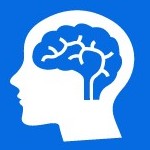
0-2 months
The child vocalizes, plays with the speech organs, swallows well, pulls well when sucking, opens and closes the public well. Unsuccessful development of the motor system, reactions to sudden and sounds are unstable and immature, but they can be distinguished from those sounds that the child is afraid of, that are interesting and fun, at the most general level, that are pleasant and that are unpleasant.
2-4 months
Кај детето може да се забележи звук на гукање, како детето да пее самогласки. Детето произведува слогови како „ба“, „га“ кои се слични по времетраење и интензитет. Се појавуваат безгласни плозиви, „П“, „Т“. Поврзани се 3 различни самогласки („e, а, у“…). Детето со очите го бара изворот на звуците, односно се обидува да ги локализира звуците во просторот.
4-6 months
Vowels are connected into syllables and sounds that resemble "L", "X", "F", "V" appear spontaneously. "Babbling" with the combinations "ap", "apa", "ba", "da", "ta", "ga" is typical for this period. By vocalizing, the child sometimes confirms that it recognizes the mother. Recognizes the voices of household members and frequent visitors. To sounds such as the barking of a dog, the meowing of a cat, a bell, a telephone, calling by name, he reacts with increased attention and turning his head in the direction of the source of the sound.
6-8 months
The child begins to double the same syllables ("ba-ba", "pa-pa", "ta-ta"), and then different syllables ("ma-ba", "ta-ba"). He understands his name and answers when called. When he cries he says "m…m…m." The child begins to distinguish sounds and attach meaning to them. An indicator that hearing is not developing properly can be the absence of head movement in the direction of the sound or the absence of "babbling".
8-12 months
The child pronounces a certain number of sounds with combinations of sounds. There are several words that were formed by doubling the same syllables and to which meaning is attached (grandmother, grandfather, papa, dad). In this stage of speech-language, the word is associated with a person or object and thus acquires its meaning. The child can show "where the bunny drinks water", "where the smart head is", knows how to fart, imitate sounds (mow-mow, aw-ab). He understands the meaning of some words even though he does not say them, such as "Give", "Here", "no-no". The child can listen focused and occasionally tries to imitate the sounds he hears and tries to repeat the words when prompted by the speech.
12-18 months
The child understands commands such as "Come", "Bring", "Let's go". Named objects can be recognized and shown by the child (on request). Has an active vocabulary of 6-8 words (mom, grandma, dad, papa), knows how to use two-word phrases (give, give, come on mom) and spontaneously names familiar objects. Pay attention to these speech activities because if they are partially or completely missing, hearing impairment may be suspected.
18 months to 2 years
The child responds to requests to show various objects (house, hat), characters (bat, knife), understands commands and shows his and other people's body parts (the doll's eye, his hand, mother's eye). Makes simple extended sentences of 3 words, knows how to name objects such as key, watch, doll, etc. The speech is at the level of simple sentences: "Mary is crying." From prepositions, he knows how to distinguish "in" (inside) and "I" (below). He answers the question "Who are you?", "What is your name?", What does the kitten say?" He talks while playing and can say what he wants. He listens to songs and stories with pleasure and attention. If speech activities are absent, it is NECESSARY to check the child's hearing.
2-3 years
Calls himself by name (doesn't say "I"). Recognizes object function based on image (something I'm wearing, something I'm eating). He shows his years with his fingers. It imitates some sounds. The vocabulary is from about 500 to 1000 words. Can recite a poem.
3-4 years
He knows how to describe the actions of the pictures ("bata is laughing", "seka is playing"), he understands the differences at the most basic level (big-small, bata-seka). He can recognize the rules of the game (Don't get mad man). Gives answers, understands questions: "What do you do when you're hungry?", "What do you do when you're cold?" Counts to 5. Names and recognizes 2-3 colors. It has a vocabulary of about 1500 words. Speaks in complete sentences intelligibly, about himself and others, about the events of the day. Plays imaginary games (makes up roles). It distinguishes between the left and right sides. Can recite a poem of three stanzas. He follows the content of the stories with curiosity and asks questions.
4-5 years
Speech is grammatically correct. The child can define simple words (what is the sun, what is an apple). He tells the stories he heard. Executes three consecutive commands. Can count in sequence to 10. Can recognize basic differences and similarities (what makes a cow and a sheep alike, what makes a fish and a bird different). He knows which animal gives milk, how many legs a dog has.
5-6 years
He can name the days of the week, define simple words, retell stories he has heard, execute three consecutive commands ("Go to the living room, take a notebook from the table and bring it to me"). Can count in sequence up to 10. Can repeat 4 or 5 nonsense syllables. He has a vocabulary of about 2000 words and uses all the elements of speech correctly.
6-7 years
They can retell a story that has been told. It can tell with which letter a certain word begins. Analyzes and synthesizes words of 4-5 sounds. He can count to 20 forwards and backwards. He knows how to name the seasons, explain the difference between them. Describes pictures and notices cause and effect relationships.

